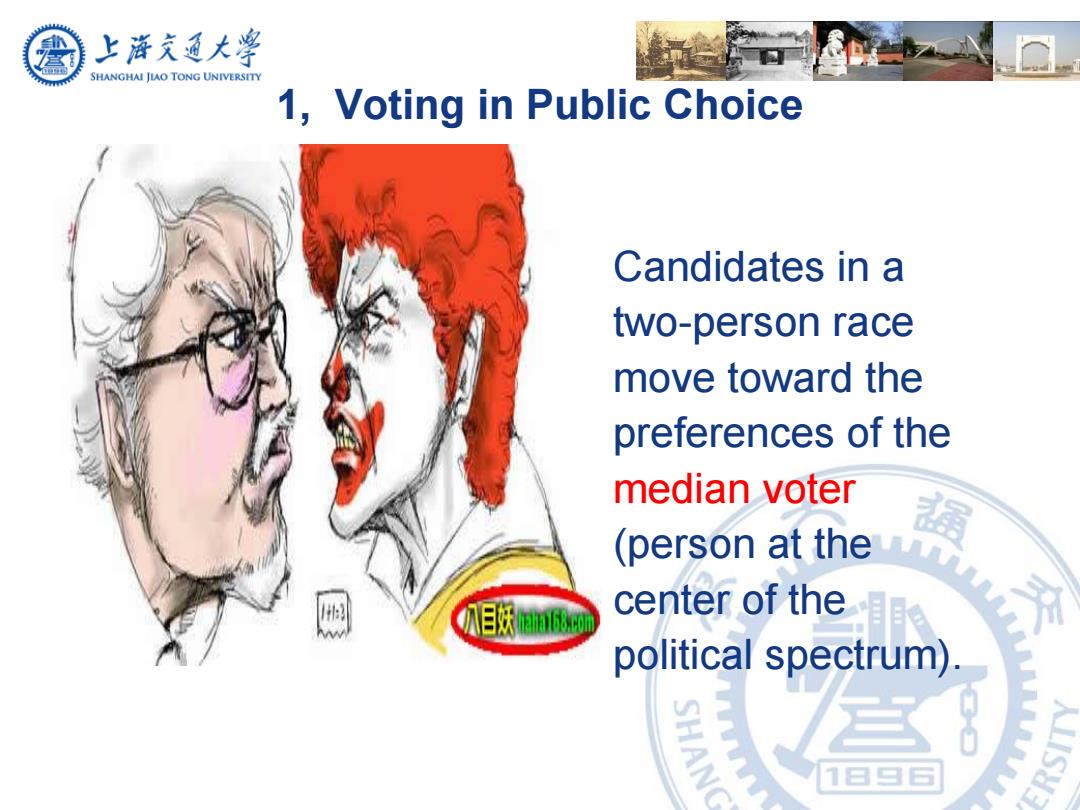
上游充通大学 SHANGHAI JIAO TONG UNIVERSITY 1,Voting in Public Choice Candidates in a two-person race move toward the preferences of the median voter 漏 (person at the center of the目e political spectrum) 1日G
1, Voting in Public Choice Candidates in a two-person race move toward the preferences of the median voter (person at the center of the political spectrum)
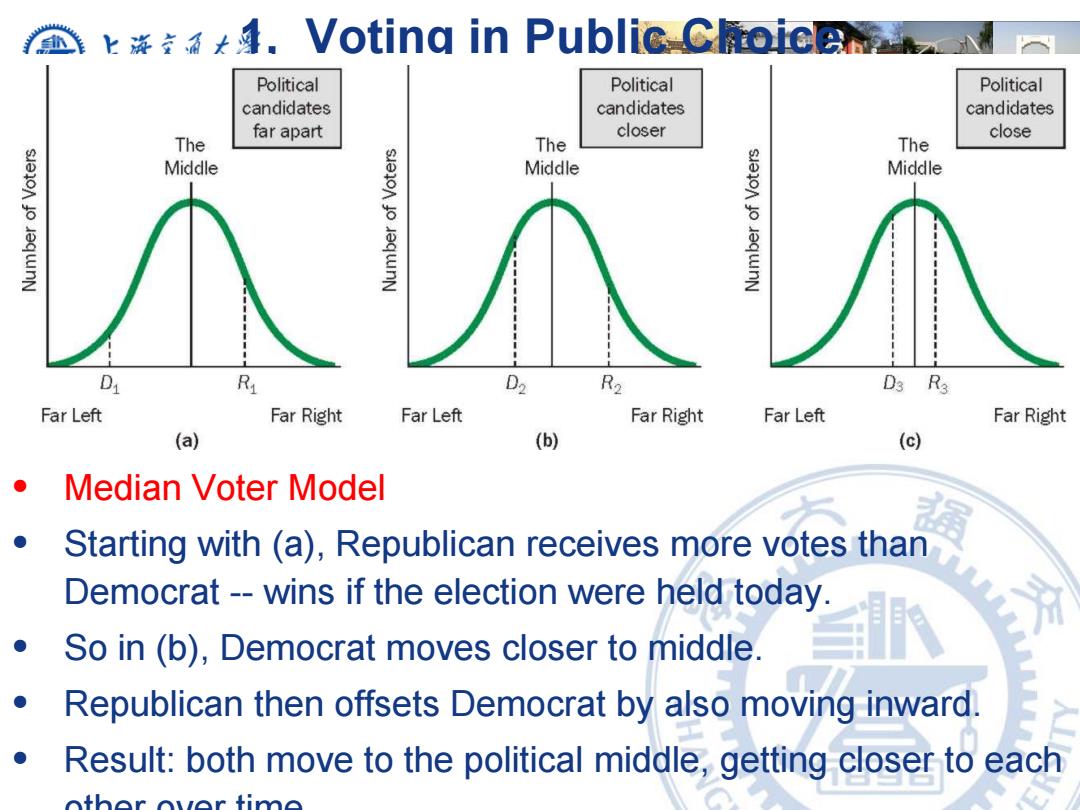
4.Votina in Public choice Political Political Political candidates candidates candidates far apart closer close The The The Middle Middle Middle Di D2 R2 D3 R3 Far Left Far Right Far Left Far Right Far Left Far Right (a) (b) (c) Median Voter Model 漏 tarting with (a),Republican receives more votes tha ● Democrat--wins if the election were held today. So in(b),Democrat moves closer to middle. ● Republican then offsets Democrat by also moving inward. Result:both move to the political middle,getting closer to each other over
1, Voting in Public Choice • Median Voter Model • Starting with (a), Republican receives more votes than Democrat -- wins if the election were held today. • So in (b), Democrat moves closer to middle. • Republican then offsets Democrat by also moving inward. • Result: both move to the political middle, getting closer to each other over time
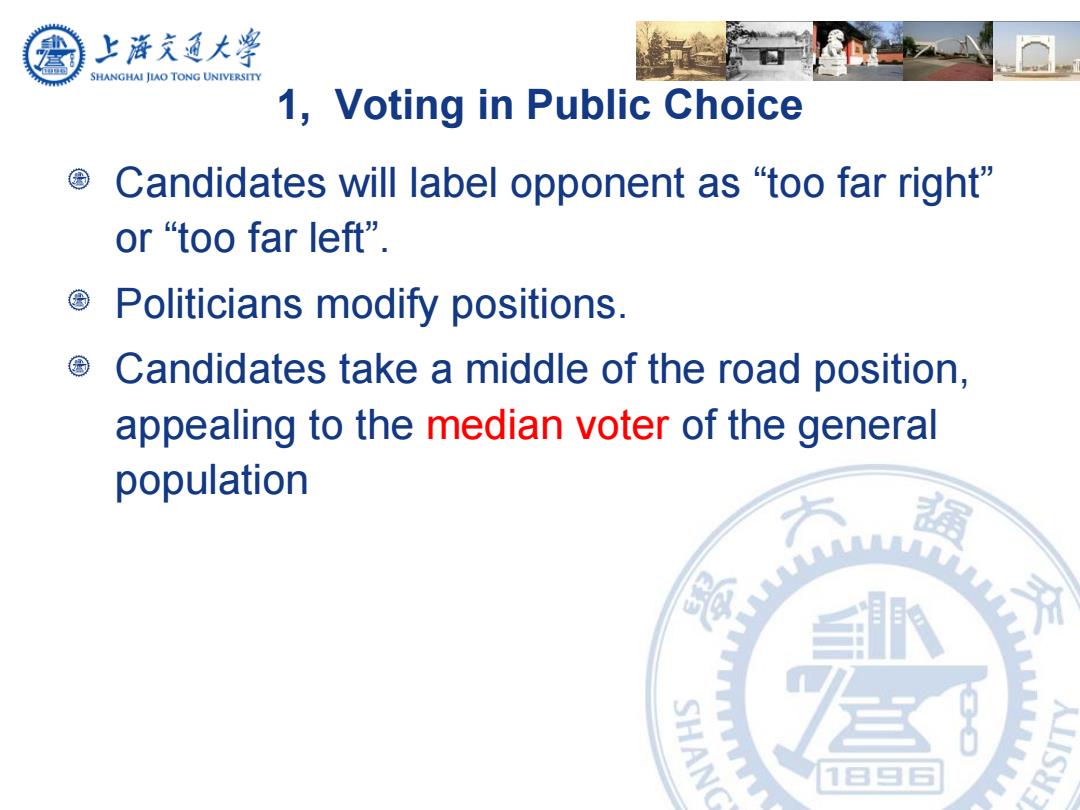
上浒充通大学 SHANGHAI JIAO TONG UNIVERSITY 1,Voting in Public Choice Candidates will label opponent as"too far right" or“too far left”. Politicians modify positions. Candidates take a middle of the road position, appealing to the median voter of the general population 强 月员是。 SHANC 1日G
1, Voting in Public Choice Candidates will label opponent as “too far right” or “too far left”. Politicians modify positions. Candidates take a middle of the road position, appealing to the median voter of the general population
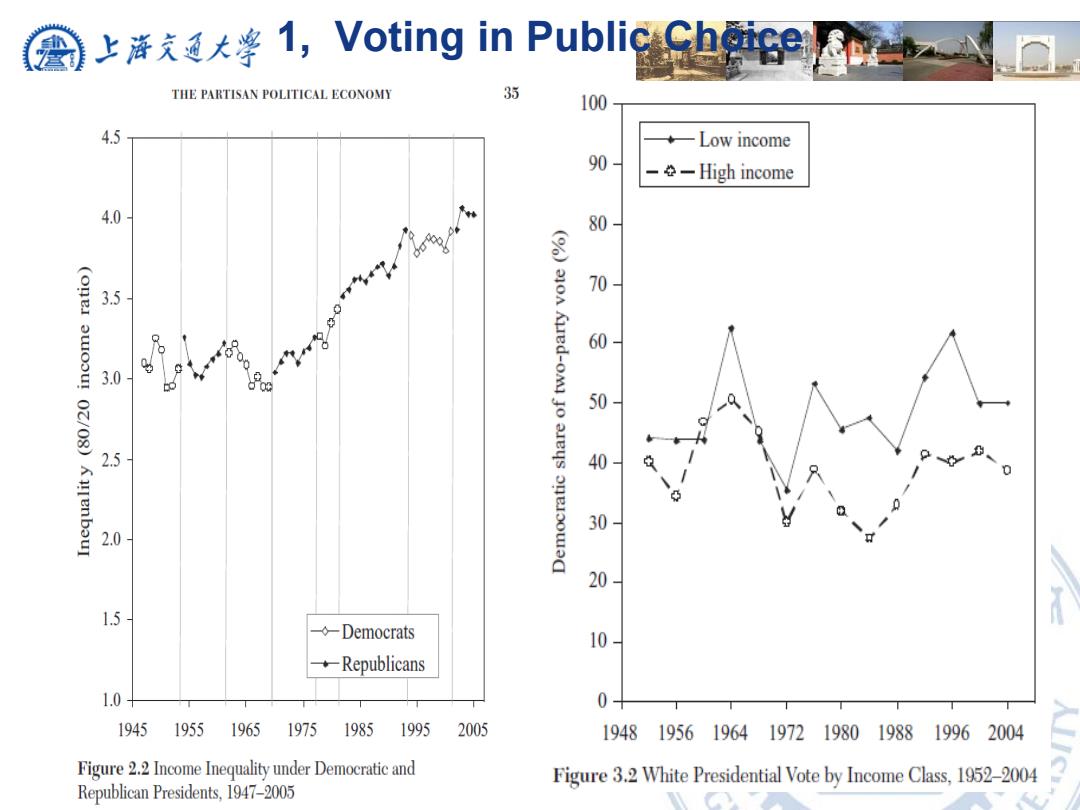
上浒亥通大¥1,Voting in Public Cheice THE PARTISAN POLITICAL ECONOMY 35 100 4.5 Low income 90 -High income 4.0 80- 8 70 3.5 60 3.0 50 2.5 40 30 2.0 20 1.5 -◇-Democrats 10 Republicans 1.0 0 1945 1955 1965 1975 1985 1995 2005 194819561964197219801988 19962004 Figure 2.2 Income Inequality under Democratic and Figure 3.2 White Presidential Vote by Income Class,1952-2004 Republican Presidents,1947-2005
1, Voting in Public Choice
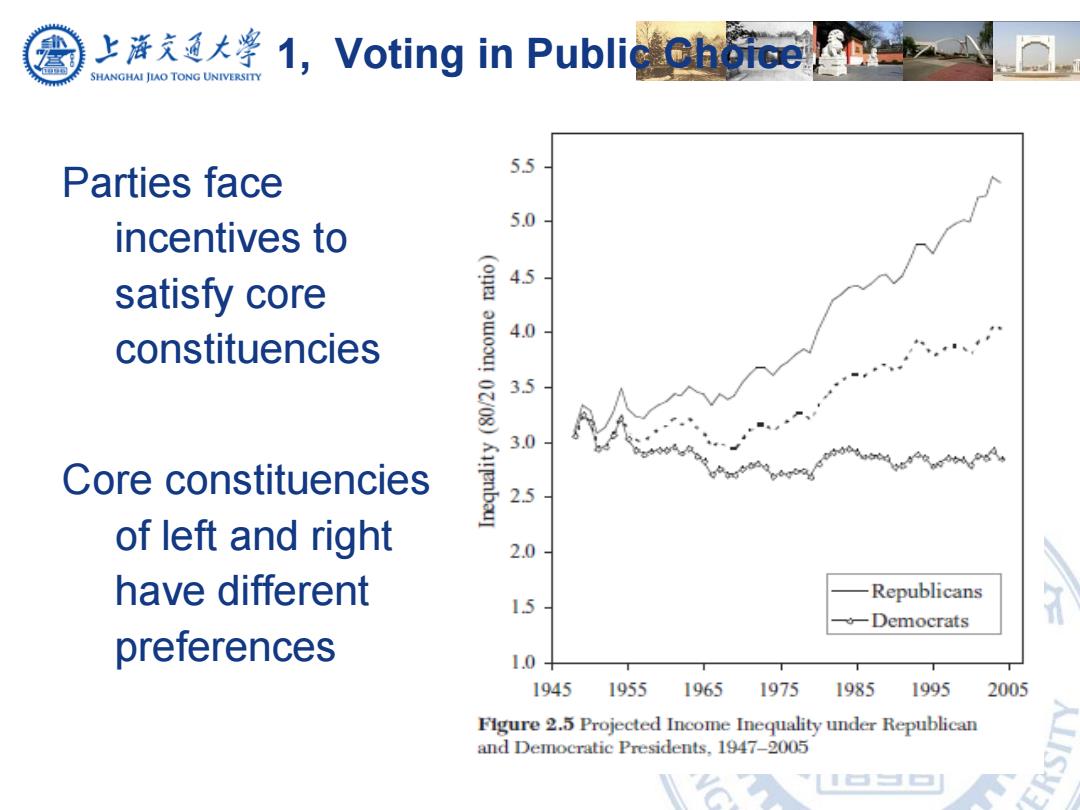
上大¥1,Voting in Public Choiee SHANGHAI JIAO TONG UNIVERSITY 55 Parties face 5.0 incentives to satisfy core 4.5- 4.0 constituencies 3.5 3.0 Core constituencies 2.5 of left and right 2.0 have different Republicans 15 Democrats preferences 1.0 1945 1955 1965 1975 1985 1995 2005 Figure 2.5 Projected Income Inequality under Republican and Democratic Presidents.1947-2005
1, Voting in Public Choice Parties face incentives to satisfy core constituencies Core constituencies of left and right have different preferences